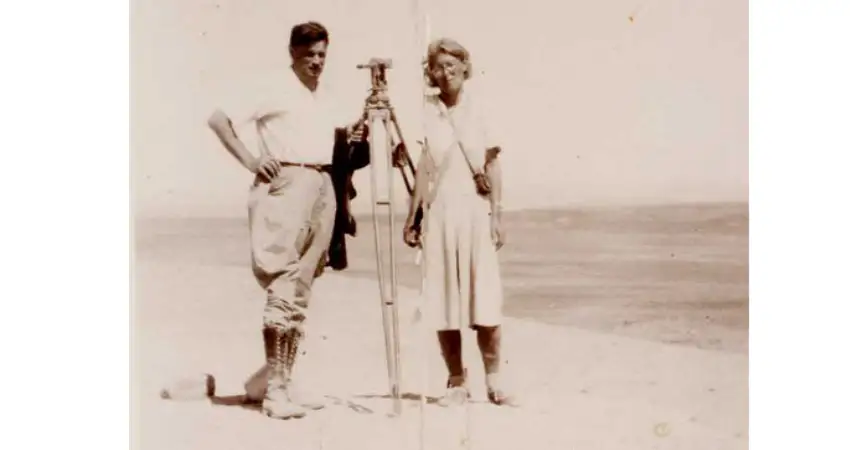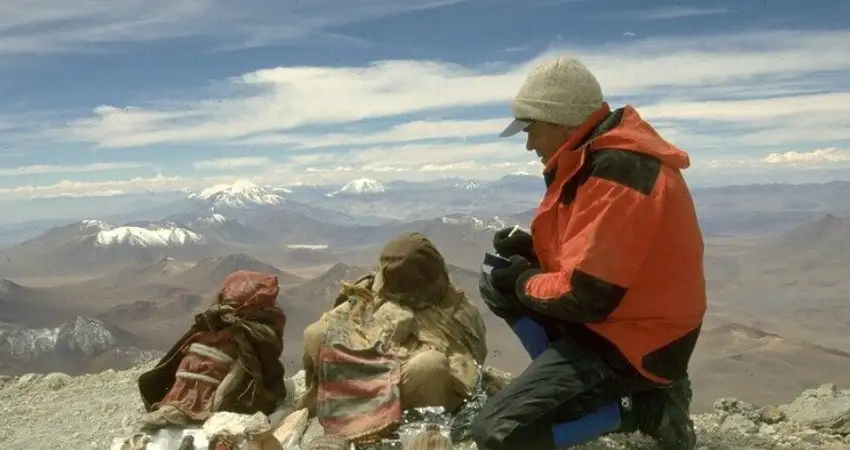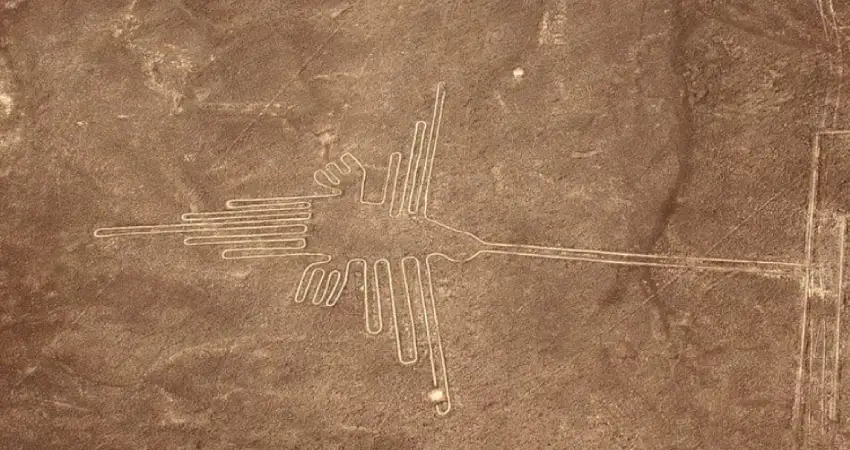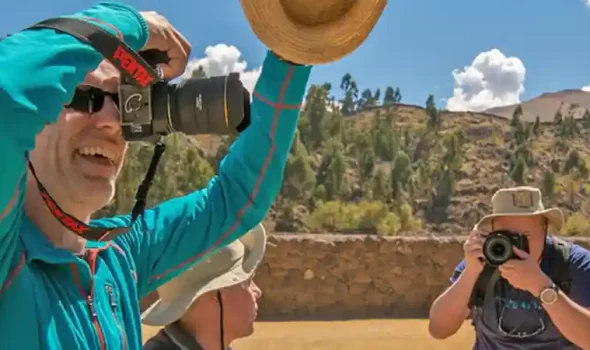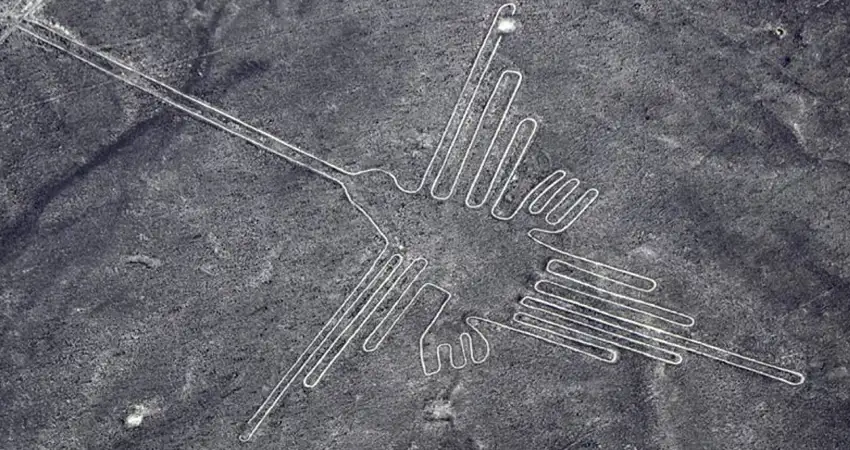
1.- INTRODUCTION TO THE HISTORY AND NAZCA LINES THEORIES
This mysterious destination is located in one of the arid deserts south of the city of Lima, to this day has become one of the greatest enigmas of world archeology. Although its origin is completely a mystery, it is known that they were made by the Nazca culture, a civilization that existed long before the Incas and inhabited this sector, because of this multiple Nazca Lines theories have been formed trying to explain what represent the huge figures that have been designed and drawn on the surface of the vast desert.
There are multiple forms of these geoglyphs, from geometric figures, human figures, animals and even representation of some plants. Thanks to studies conducted over the years it has been determined that they could be possible to remove a set of dark stones from the surface is what causes its base has a lighter shade, however none of all the Nazca Lines theories has been able to determine how it was possible that many of these have incredibly large dimensions, In some cases even measuring up to 380 m long, they are so impressive that they can only be appreciated in all their splendor when flying over them, it is not so far-fetched that many of the Theories about Nazca Lines point to the fact that these designs were probably landing strips for civilizations from other worlds.
| “Travel is good for the heart.” |
Of course, it has also been given a more earthly meaning, associating the presence of these geoglyphs with the place it is determined that they had a more religious and cultural significance for the Nazca civilization. There are those who suggest some Nazca Lines theories relating the figures with rituals for the invocation of rain, that would also have a logical sense because being an arid desert the presence of rain is not frequent. Another of the most accepted Nazca Lines theories is that they were ceremonial roads which were traveled in the sense of procession with the intention of invoking the gods to ask for the fertility of the land and for the presence of rains, like other places and conical of the Andean cultures is that it is related to certain astronomical events such as projection of shadows or injuries which somehow reinforces this religious idea.
On the other hand, culturally explaining it, the Nazca lines are a cultural heritage of many generations, not only represent a historical or archaeological discovery, but an invaluable legacy that beyond demonstrating the ability and progress that could have had the culture also shows its worldview as an ancient civilization so that today is a symbol of national identity.
2.- SOME OF THE MOST POPULAR NAZCA LINES THEORIES
When we think of mysteries, without a doubt the Nazca Lines are the first thing that come to our mind and this is because they are still an unsolved fact in the world. This has provoked an immense amount of Theories about Nazca Lines trying to explain what was their purpose and origin. From logical ideas such as associating them to religion for agricultural activity to some more outlandish ones involving the participation of otherworldly beings, let’s discover together which are the most popular Nazca Lines theories today.
3.- INTERNATIONAL RECOGNITION
“The Nazca Lines was declared a World Heritage Site by UNESCO, representing the cultural legacy that has been preserved for generations.”
3.1.- Theory elaborated by Paul Kosok
The anthropologist Paul Kosok is one of the first anthropologists to dedicate his career to investigate the mysterious Nazca Lines, during 19 years using terrestrial and aerial transports he elaborated a compilation of his investigation and inherited it to a young German woman called Maria Reiche. In this study he determined a Nazca Lines theory, mentioning that the geoglyphs were part of an astronomical calendar since they coincided with the location of the sun and paralleled the winter solstice. He used the term the world’s largest scale calendar and pushed the idea that its purpose was specifically religious and astronomical.
3.2.- Theory elaborated by Erich Von Daniken
A Nazca Lines theory promoted by the Swiss archaeologist Erich Von Daniken that is also well known was the relation that the immense geoglyphs of the Nazca culture had with the presence of extraterrestrials who used the drawings as a landing strip. In 1968 he wrote a book titled Chariots of the Gods where he bases important data about his Nazca Lines theory, of course it was very criticized by other specialists who argued that the fact of assuring life outside the earth was not possible.
3.3.- Theory elaborated by Maria Reiche
It is true that there are many Nazca Lines theories and few have a sense more than others, this is what happens with the Nazca Lines theory of archaeologist Maria Reiche or also known as the “lady of the Nazca Lines” title that was granted by the Peruvian government and UNESCO because she dedicated about 40 years of her life in the investigation of these Geoglyphs. He assures that the lines were a kind of astronomical observatories from where one could appreciate in a direct and much clearer way the constellations of stars, movements of the sun and the moon. He assures that the geoglyphs have a sense of a map, a place from where a different event can be appreciated and at the same time it is related to the change of the climate which helps to project a lot in the agricultural activity.
3.3.- Theory elaborated by Johan Reinhard
Among all the Nazca Lines theories, undoubtedly the one of the American archaeologist is one of the most accepted masses and also one of the most coherent. He mentions that the Nazca lines were somehow linked to a religious ritual practice destined to the adoration of water. At first glance this may make a little more sense because of the location in which the Nazca culture was located (an arid desert), water may have been a highly valued element, even more so than gold, since to this day it is considered a source of life.
3.4.- Theory elaborated by Donald Proux
Based on other Nazca Lines theories, the archaeologist Donald Proulx proposed a much more accepted Nazca Lines theory with the help of the hydrogeologist Stephen Mabee mentioning that the lines were actually orientations to different key points that functioned as supplies and sources of subway water. Within the Andean culture it is also known as “Puquios” or “ojos de agua”, these were unique places where fresh water could be found coming from inside the earth, in a coherent way this is one of the most accepted Nazca Lines theories until today.
4.- FAQs ABOUT NAZCA LINES
- How can I visit the Nazca Lines?
Visiting the Nazca lines is quite easy, the first thing to do is to take a tourist bus from the city of Lima to the city of Ica, regularly this trip takes about 4 hours and has a cost of about s/ 60.00 soles per person. Then you continue the trip to Nazca for 2 hours and 30 minutes which represents a second trip that has an extra cost of s/ 50.00 soles per person. The company Cruz del Sur is the best option to enjoy this trip, the best recommendation is to make this trip a day before and spend the night in Nazca so you can make the experience of overflight in the morning of the second day.
- What is the best time of year to visit the Nazca Lines?
Undoubtedly the best time of the year to enjoy this visit is during the summer between November and March, when the weather is much more stable and the temperature is ideal and the wind is not so strong which allows most of the overflights to be calm and without turbulence.
- How long does an aerial tour of the Nazca Lines last?
All overflights to the popular Nazca Lines last about 45 minutes in the air, in case you are looking to enjoy a panoramic view of all the geoglyphs it takes up to an hour.
- Are there any restrictions or requirements for taking an aerial tour?
The main thing that is taken into account to be able to make the aerial tour is a previous evaluation of fear of heights and there is a weight limit for participants, for obvious reasons those people who weigh more than 110 kg can not make the trip for safety reasons.
- How much does an aerial tour of the Nazca Lines cost?
There are different prices for this adventure, usually ranging from $70.00 to $90.00 per person depending on the season and the number of participants in your group.
Now that you know a little more about all the Nazca Lines theories you will understand that your trip can have a purpose, it is the cultural touch you were looking for. Auri Peru can help you enjoy this experience in a much more personalized way, contact us now and take the first step in your next adventure.
“Traveling is not a matter of money, but of daring to do it.”





